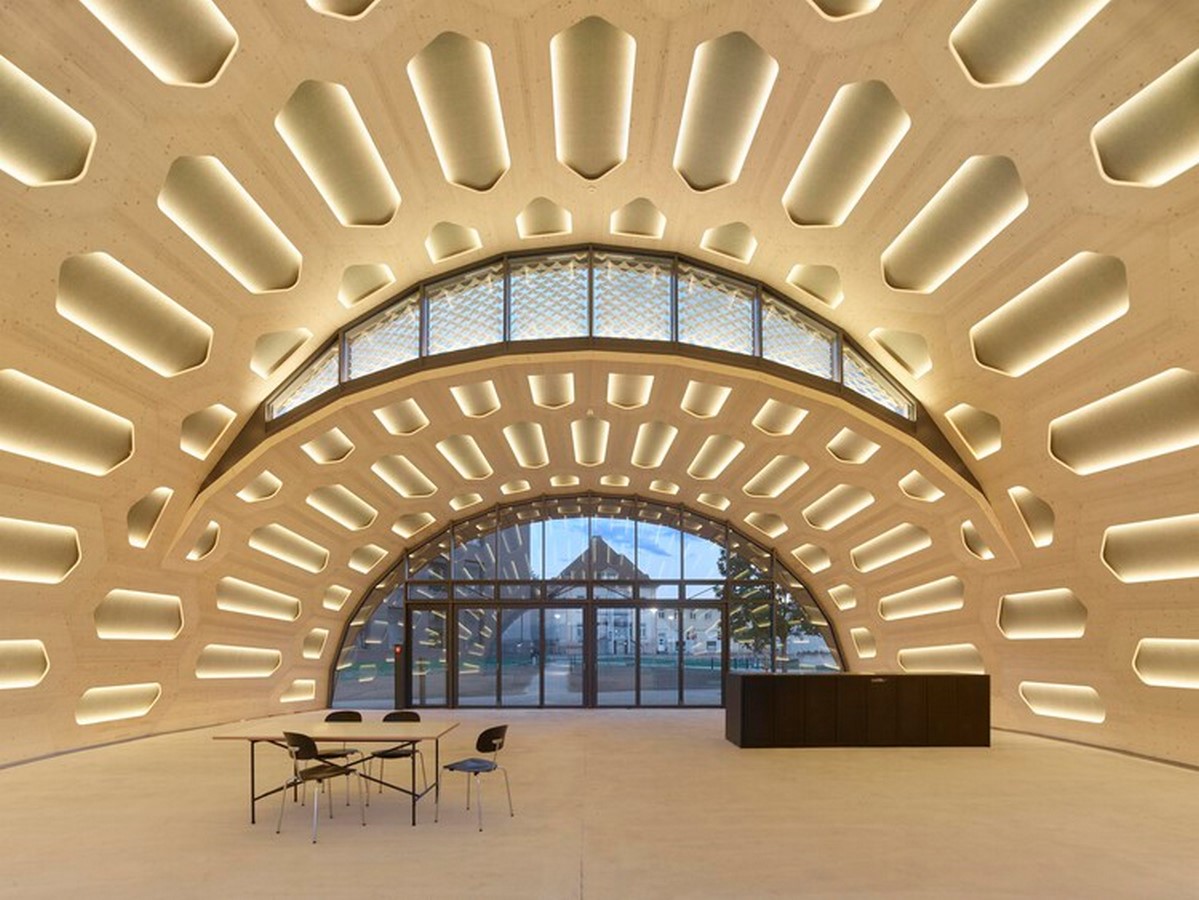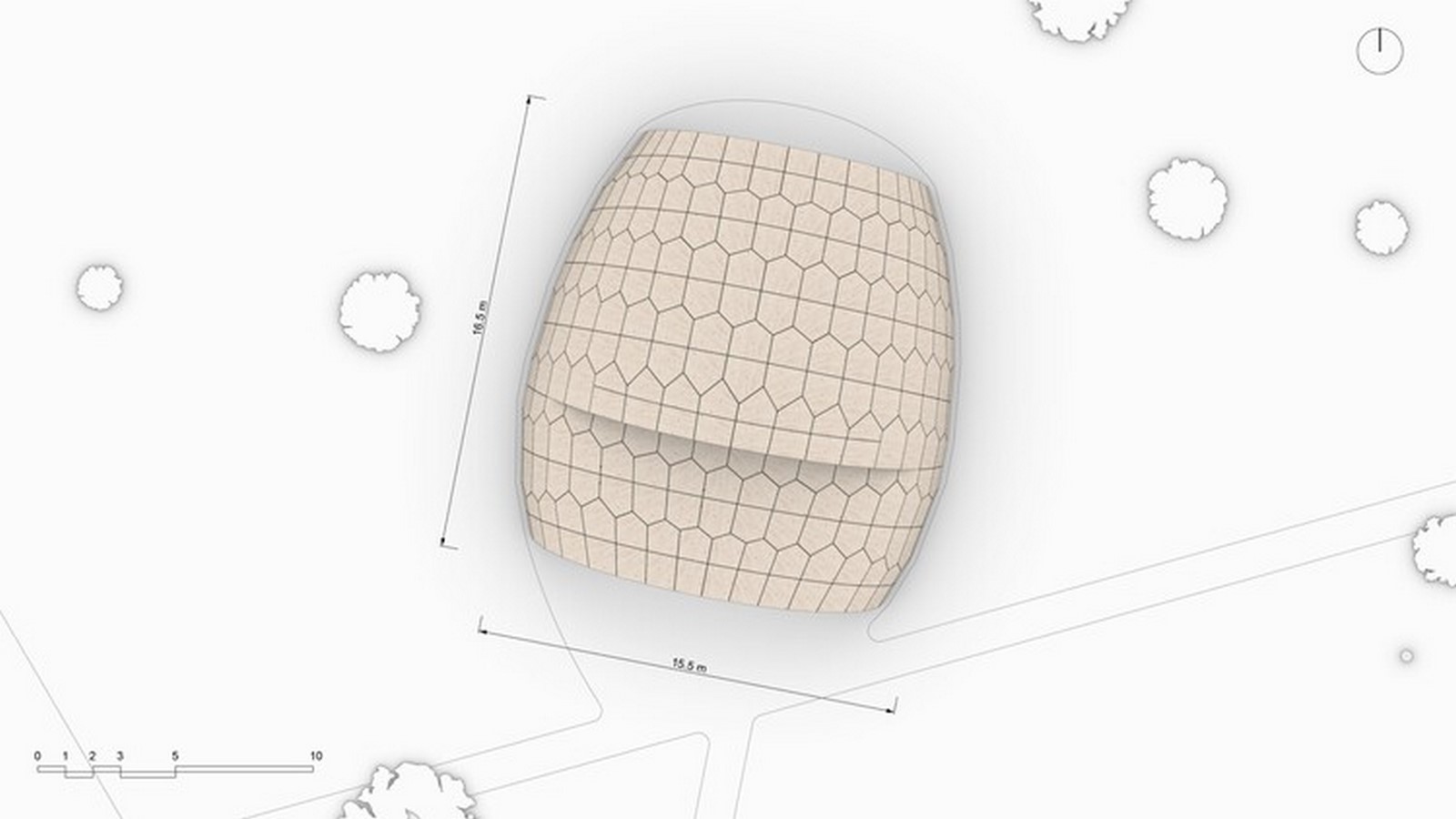Exploring Sustainable Architecture livMatS Biomimetic Shell

Introduction
The livMatS Biomimetic Shell, located at the FIT Freiburg Center for Interactive Materials and Bioinspired Technologies, stands as a testament to pioneering research in sustainable architecture. Developed by the Integrative Computational Design and Construction for Architecture (IntCDC) at the University of Stuttgart and the Living, Adaptive, and Energy-autonomous Materials Systems (livMatS) at the University of Freiburg, this innovative pavilion serves as both a research facility and an architectural marvel.

Integrative Research Approach
This architectural incubator seamlessly integrates into the surrounding campus while embodying a cross-disciplinary approach to research. By bringing together the expertise of two Excellence Clusters, the livMatS Biomimetic Shell represents a synthesis of different research methodologies aimed at sustainable design and construction.

Sustainable Design Features
Compared to conventional timber buildings, the pavilion reduces its total environmental life cycle impact by an impressive 50%. This achievement is made possible through the use of a distinctive segmented timber shell construction, which is fully deconstructible and reusable. The pavilion’s design incorporates advanced computational methods, robotic prefabrication, and automated construction processes, showcasing the potential of human-machine interaction in timber construction.
Innovative Solutions for Climate Regulation
At the heart of the pavilion lies the “Solar Gate,” a large-scale skylight equipped with a biomimetic, energy-autonomous 4D-printed shading system. This innovative feature contributes to regulating the indoor climate, ensuring comfortable year-round use with minimal reliance on traditional building services. Additionally, an activated floor slab made of recycled concrete further enhances the pavilion’s sustainability credentials.


Expressive and Flexible Architecture
The livMatS Biomimetic Shell offers a flexible and expressive space that serves as a model for sustainable construction. Its design not only provides a platform for cutting-edge research but also demonstrates alternative paths towards a greener future. By showcasing the possibilities of biomimetic design and energy-efficient technologies, this pavilion inspires further exploration and innovation in the field of sustainable architecture.


Conclusion
In conclusion, the livMatS Biomimetic Shell represents a milestone in the quest for sustainable architecture. With its innovative design, integrated research approach, and commitment to environmental responsibility, it serves as a beacon of inspiration for architects, researchers, and environmentalists alike. As society continues to seek solutions to the challenges of climate change, pavilions like this pave the way for a more sustainable and resilient built environment.



















